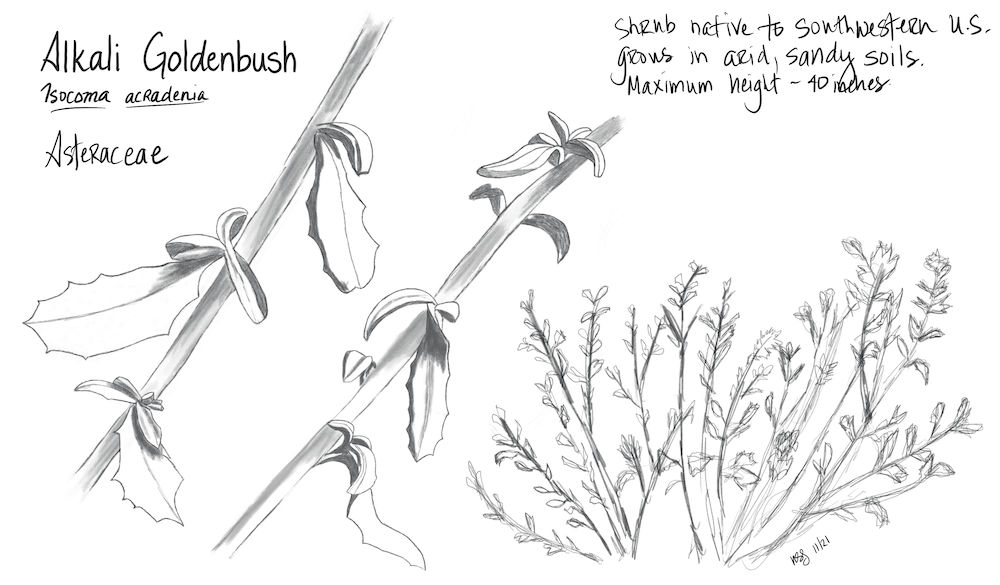Your lab instructor will guide you through a first viewing of this video. When prompted by your lab instructor, you will watch the video a second time, and complete the questions and sketch assignments below.
- California oak woodlands have higher levels of biodiversity than any other terrestrial ecosystem in the state. One factor affecting diversity is the amount of light reaching the understory. What can you say about canopy structure in this part of the woodland: closed, semi-open, open?
- How would you characterize the abundance and general appearance of understory plants here?
- At least 300 terrestrial vertebrate species and 5,000 arthropod species occur in oak woodlands. What evidence of animals can you detect throughout the video? Remember to include animals you can hear and evidence that animals leave behind such as scat, leaf damage from herbivory, or digging.
- Leaf litter and the underlying soils support an entire tiny community of primary producers, grazers and predators. Rates of decomposition can have important effects on this community. Describe the depth, level of decomposition and possible types of materials on the ground. Based on your observations, how might the soil community be affected by decomposition rates?
- Lichens are a symbiotic organism formed by a mutualism between a fungus and algae. California lichen diversity is high, representing over 52% of the 646 genera of lichen in the continental United States and Canada. Lichens do not harm oaks and some even sequester nitrogen which then fertilizes the oaks during rainstorms. Can you find lichens on oak branches (they usually appear as splotches of light or dark green)? Based on their location, what can you say about the habitat preferences of these lichens? Do they like sunlight? Moisture?
- California summers are hot and dry. Almost all precipitation falls between September and May. Carefully observe the leaves of plants in this habitat. What aspects of leaf morphology might help the plant conserve water.
- In this video, there is an example of soil compaction, a processes that increases erosion. Can you find evidence of soil compaction? What kind of changes in trail design would increase or decrease erosion?
- Invasive species can form mono-cultures excluding all other species. Can you find an example of a plant forming a monoculture?
- Can you find evidence of herbivory? Does the evidence differ among species of plants?
- Plant diseases can have dramatic effects on ecosystems. In California, Sudden Oak Death is causing massive declines in oak trees which support much of the species diversity in the ecosystem. The disease is carried by many other plants and causes leaves to brown. Can you find evidence of leaf damage that might be caused by this pathogen?
- Over 160 species of birds shelter in oak woodlands. How many different kinds of bird calls can you hear?
During your second viewing, you will also need to select an organism from the video to sketch. Once you find something you want to draw, just pause the video long enough to complete your sketch. See the example below (based on a plant seen in a different video):

After you finish the assignment, please visit the survey linked below. After completing the survey, you must take a screenshot of your confirmation screen and upload it to the “Ecosystem Exploration Follow-up” assignment on Canvas. Do not include the screenshot in the lab worksheet. You must upload it separately to the correct Canvas assignment.
https://sonoma.az1.qualtrics.com/jfe/form/SV_esNlr52D2DiaJmu
Navigation:
Landing page: https://wendystjohn.summerlark.net/2020/11/18/ecology-lab/
Ecosystem Exploration: https://wendystjohn.summerlark.net/2021/11/19/ecosystem-exploration-fairfield-osborn-preserve/
Trophic Interactions in the Kelp Forest: https://wendystjohn.summerlark.net/2020/11/24/trophic-interactions-in-the-kelp-forest/